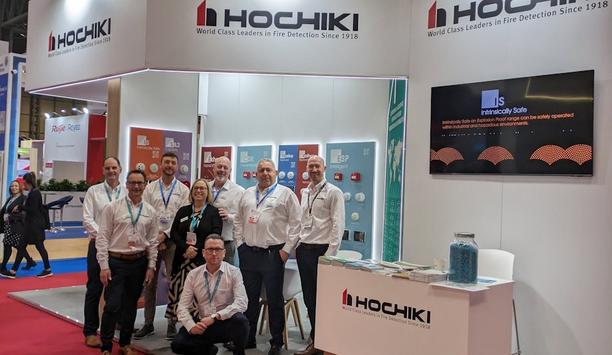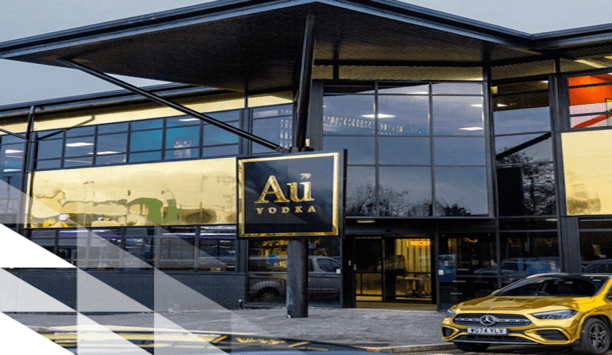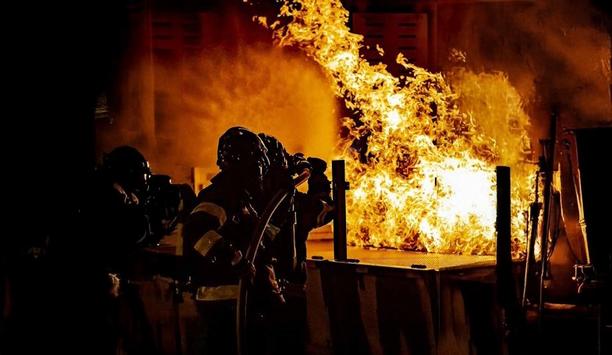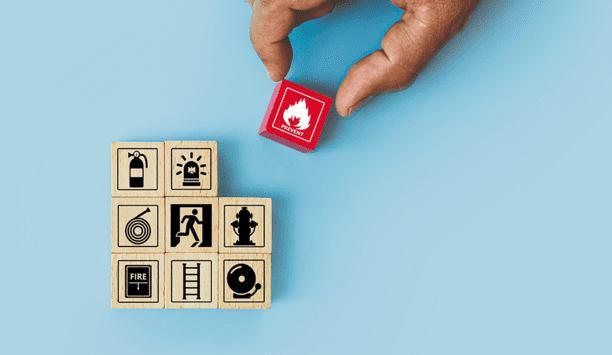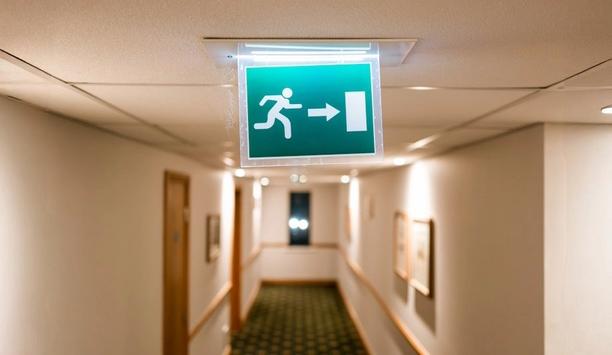Fire Detection
Johnson Controls, the global pioneer for smart, healthy and sustainable buildings, launches the new Autocall 4017ES Fire Alarm Control Unit in the U.S. to help customers meet evolving life safety voice regulations. Available in addressable and conventional versions, the 4017ES is a compact, cost-effective control unit that offers three communication options – fire, alarm, and non-alarm – for added clarity during emergency situations and public addresses in small to mid-size building...
The Fire Safety Event 2025, a cornerstone of the industry calendar, is poised once again to present a comprehensive display of the most advanced fire detection and suppression technologies. Taking place at the National Exhibition Center (NEC) in Birmingham, the event is expected to welcome well over 12,000 fire safety professionals, including fire safety officers, building managers, architects, engineers, and other key stakeholders. Future of fire protection Hochiki has held a major role at t...
AU Vodka, the rapidly expanding premium spirits brand renowned for its distinctive gold bottles, has selected a state-of-the-art fire detection system from Hochiki Europe for its impressive new head office in Swansea. The system, installed by South Wales-based fire safety and security specialists H3 Group, provides exceptional reliability and seamlessly integrates with the building’s ultra-modern design. Safeguarding Innovation AU Vodka entrusted the project to H3 Group, a long-standing...
As workplaces have evolved over the past year or so companies should have a flexible mind as to how to best keep the office/workplace compliant. The first point is often to check the risk assessment is up to date and make sure it stays adaptable to reflect the current working practices. If users have implemented a new hybrid working practice, altered the building layout, or changed how the building is used there is an onus on the Responsible Person to consider in the Fire Risk Assessment; Ch...
A Fire Risk Assessment (FRA) is an essential component of their organisation’s overall Fire Risk Management Strategy. As with all fire safety measures, the primary goal of a risk assessment is to keep people safe. Virtually all buildings in England and Wales are required, by law, to undertake a Fire Risk Assessment (except for domestic dwellings). This article will explain the process of carrying out a Fire Risk Assessment, their responsibilities under Fire Safety legislation, as well as...
The Fire Industry Training Academy (FITA) is the benchmark provider for educating and training professionals within the fire industry. The organisation supports those seeking to gain fire safety compliance – whether an individual, small company, SME, industrial space or large-scale public sector body. FIFA can advise on what the government expects in terms of ensuring buildings are fire safe. Fire safety compliance @FITA_fire: “Training may seem like an expensive luxury, but is a...
News
At FireRite they have always offered a range of fire safety training in different formats. They’ve offered a range of standard training packages as well as bespoke and tailored training to meet their specific needs. The way that they approach training delivery needs to adapt and change as the world moves into ‘the new normal’. The requirements and legislation relating to fire safety for businesses have not gone away or been relaxed during the lockdown. Fire safety training is a legal requirement in England & Wales. It is still their responsibility to ensure that users are meeting legislative guidelines relating to fire safety training. Social distancing measures The impact of COVID-19 and social distancing measures has already forced almost all businesses to change the way they operate. However, there is still a significant demand for fire safety training, so here at FireRite, they have also adapted the way they offer training sessions. So here at FireRite, they have also adapted the way they offer training sessions As more businesses, shops and other venues have been preparing for re-opening after lockdown, many workers have been frantically re-arranging workplaces, moving furniture, fixtures, and fittings to allow for a safer, socially distant way of working. It is also likely that they’ve had quite a few staff changes during lockdown, so there’s never been a better time to arrange fire safety training for the staff as they adapt to their new working environment. Safety is at the front of everyone’s mind, so it is reassuring for the staff to know that they are taking all aspects of their workplace safety seriously. Fire safety training session So, what does a socially distant fire safety training session look like? They have been paying close attention to the ever-changing Government guidelines relating to social distancing and reducing the spread of Coronavirus when planning the training sessions. Trainers and participants will adhere to the 2-metre distancing rule throughout the course, which may mean that training sessions have fewer participants due to the size of the room and space available. This may be reduced when public health advice says that it is safe to do so. As most of their training sessions take place indoors, they may be asked to wear PPE such as a fabric mask, even if users do not have any symptoms. Again, this may change according to advice from the Government and public health officials. They will also provide hand sanitizer, soap, and disinfectant wipes for all participants to use as required. A Typical Fire Safety Training Day Itinerary with FireRite Here’s an example of a typical fire safety awareness training session that they offer. Their ‘Advanced Fire Awareness’ session covers the following: The basic chemistry of the triangle of fire How fires spread and the most common causes of fire to be aware of Fire prevention and good practice Fire safety features within a building designed to protect its occupants The importance of effective fire doors Fire alarms and other alert systems - what to do in the event of a fire Fire evacuation strategies focusing on their specific needs, such as the layout of the premises, its occupancy, and the location of the exit routes. Personal Emergency Evacuation Plans for occupants with disabilities or reduced mobility Human behaviour in fire – the psychology of how people react when faced with sudden danger, and how to reduce fear and panic Firefighting equipment – correct and safe use of various firefighting equipment (e.g. fire extinguishers) with practical demonstrations where possible Their experienced fire safety trainers can tailor these learning outcomes according to the type of premises that users are operating. They understand how important it is that the staff have the most relevant information to do their jobs safely and efficiently. Bespoke training plan The trainers will work with users to put together a comprehensive bespoke training plan for users and their team. They offer a broad range of fire safety training courses, covering topics such as: Basic Fire Awareness Advanced Fire Awareness Fire Marshall and Fire Warden training Residential Care Home training Residential Care Home Managers training Personal Emergency Evacuation Plans (PEPs) Person-Centred Risk Assessment Fire door training Executive fire training Incident Command training Other types of Fire Safety Training All their courses meet legislative requirements for initial/ induction fire training and periodic refresher sessions. Corporate Fire Risk Training This course is specifically aimed at Board Members and Senior Management Teams within organisations This course is specifically aimed at Board Members and Senior Management Teams within organisations. Their Corporate Fire Risk Training session covers enhanced awareness of the overall fire safety responsibilities, legislative accountability and compliance required regarding fire safety. It also describes the range of different enforcement options available to Regulators and the implications for non-compliance. This session is designed to increase awareness of the fire safety guidance documents and minimum standards expected by regulators. Users will learn how inspirational leadership can promote and develop a robust effective fire safety culture throughout the organisation, alongside recognized models for fire risk management systems (FRMS). Evacuation and Fire Drill Training This course will cover everything users need to know about fire evacuation procedure for the premises. It’s suitable for all forms of buildings, from schools and offices to factories and recycling plants. Their experienced trainers will give users staff an understanding and appreciation of the importance of effective action in case of fire including staff response to the fire alarm, calling the fire brigade and effective evacuation procedures.
21st-27th of September marks Fire Door Safety Week, a week to raise awareness around a critical element of passive fire safety. Fire doors a part of the furniture in public buildings, their homes and other residential buildings. Most members of the public see fire doors all the time, but don't truly appreciate how much thought and strategic planning goes into fire doors, and how vitally important they are to their safety. Fire Door Safety Week aims to highlight the importance of fire doors to those who are responsible for maintaining buildings, homes or other public building, as part of their wider fire safety responsibilities. Fire safety responsibilities A recent report by the Fire Door Safety Week campaign highlights the impact of COVID-19. All public services have been extremely stretched this year, with most Local Authority resources being diverted to fight the spread of Coronavirus. The report shows that maintenance, inspection and other work on fire doors has suffered as a result of the pandemic. 60% of local authorities delayed fire door maintenance and inspection programs during the first half of 2020 53% of local authorities have cited COVID-19 as a reason for delays 65% of local authorities experiencing delays plan to recommence works by the end of 2020 Electronic door retainers At FireRite, they can install electronic door retainers linked to the fire alarm to overcome this Findings show that since the Coronavirus pandemic has taken hold, doors have been wedged open as people want to limit contact with surfaces and handles as much as possible. At FireRite, they can install electronic door retainers linked to the fire alarm to overcome this. It's important to remember that the risk of fire has not gone away just because we are dealing with a different risk. In fact, it's more important than it's ever been to ensure that people are kept safe and keep pressure away from the emergency services. What users need to know about Fire Doors Here's some general information and advice about fire doors: Fire Doors are not just for high rise buildings - It's not just high-rise buildings and hotel corridors that need fire doors. Fire Doors are prevalent in pretty much any sector and building including care homes, hospitals, schools and specialist housing. Fire Doors prevent fire and smoke from spreading - A fire door is an internal fire door that can slow fire or smoke from spreading throughout a building, allowing more time for evacuation. It's not to be confused with a fire escape exit, which allows people to safely evacuate. Fire Doors keep them safe - A well-maintained fire door that's being used correctly can delay smoke and flames from spreading. Fire doors usually consist of a solid timber frame and fire-resistant glass, that can withstand considerable exposure to heat. They can inspect users Fire Doors virtually - In instances where social distancing is critical, their virtual fire risk assessment can help ensure fire safety is not impacted by the latest COVID-19 regulations, whilst keeping staff and vulnerable people safe at the same time. Virtual fire risk assessment tool FireRite now offer a virtual fire risk assessment tool for care homes and other businesses who need one FireRite now offer a virtual fire risk assessment tool for care homes and other businesses who need one, which includes fire door inspections. In these unprecedented times, access to their premises may be restricted to protect staff and occupants, but it's equally as important to everyone's safety that fire doors are regularly checked. First of all, if users suspect the building they are living, working or visiting has a faulty door, report it to whoever manages or owns the building as soon as possible. Then, make sure users follow up within a week to make sure they've taken the necessary action. The 5 Step Fire Door Check Users can also perform a basic inspection of fire doors in their building or workplace using the 5 Step Fire Door Checklist. Users should check: Certification - does the door, its locks, hinges, latches and closes have CE-marked labels? Are the instructions clearly printed on the label? Apertures - has the door been altered with glazing apertured or air ventilation grilles? Gaps & seals - is the gap around the door frame consistent at 3-4mm? Are the hinges firmly in place? They should not be loose or missing any screws. Closers - Does the automatic door closer work correctly from any position? Operation - Does the door fully close within the frame? Is it kept closed and not permanently propped open? FireRite's Fire Door Testing Tool Have users seen their handy Fire door tool guide? They have an accurate tool that can test the fire door by accurately measuring the gap between the door and the frame, as well as several other aspects of the door's safety including: A card, 3mm in depth to check the Gap tolerance around the door A mirror to check the fire door label which is usually located on top of the door A tape measure to check the depth of the door: FD30 door is 44mm, FD60 door is 54mm Information a door inspector would require including Firerite’s details for a certified solution Active fire protection methods Having fire doors installed is not something users can tick-off and then forget about As with any other life-saving product, a fire door should be checked regularly to ensure it functions correctly and is ready to use. Having fire doors installed is not something users can tick-off and then forget about. They need regular maintenance to function properly. Fire doors are a passive form of fire protection, but they need testing in the same way that active fire protection methods do. It's common to test the building's fire alarms on a regular basis, but how often do users thoroughly check the doors? Fire safety consultants Periodic checks should be carried out at least every six months, or more regularly depending on the traffic using the door. Fire doors must be maintained correctly in line with the Regulatory Reform Order (Fire Safety). In the spirit of Fire Door Safety week, now is the perfect time to check the fire doors in their premises! If users need any support, contact one of their expert fire safety consultants.
As a pioneer manufacturer of high-performance sealing systems for fire doors – they have shown unwavering support for Fire Door Safety Week since its inception in 2013. Kicking off on marks a momentous 10 year anniversary of the campaign. Fire Door Safety Week (FDSW) was launched in response to a legacy of fire door neglect. Know Fire Door Basics The campaign is managed by the British Woodworking Federation and is supported by a number of partners It's a ‘mass market’ awareness campaign to increase public understanding of the vital role that fire doors play in saving lives and protecting property in the event of a fire. The campaign is managed by the British Woodworking Federation and is supported by a number of partners, including the Home Office’s National Fire Safety campaign, the National Fire Chief’s Council and London Fire Brigade. FDSW draws attention to specific issues such as poor installation and maintenance and encourages building owners and users to check the operation and condition of their fire doors and to report those that aren’t satisfactory. Everyone plays their part in ensuring a fire door performs as it should in the tragic event of a fire, from the manufacturer through to the building users, and knowing what to look out for and what to do if you spot a problem might just save a life. Why are fire doors important? A fire door is a crucial part of the passive fire protection for every building A fire door is an engineered safety device that is a crucial part of the passive fire protection of every commercial, public and multiple occupancy building. A fire door acts just as any other door in normal service; however, in a fire it takes on a critical role – to save lives and protect property. It does this by holding back the spread of fire and smoke through a building for a designated period, giving time for building occupants to escape. Fire Door Safety Essentials A fire door is not just the door leaf. It is a complete assembly comprising the frame, any glazing, intumescent fire and smoke seals and all the ironmongery that is used on the door, such as hinges, overhead door closers, latches and locks. Just like other life safety devices, such as fire extinguishers and alarms, fire doors and final escape doors need regular, stringent inspection and maintenance to ensure that they will perform as intended in the event of a fire.
Cygnus, a pioneering developer and manufacturer of EN 54-certified and 100% wireless fire detection and alarm systems, will be celebrating an important milestone at this year’s Fire Safety Event, the two-year anniversary of SmartNet achieving EN 54 certification. The Fire Safety Event is the UK's largest show dedicated to fire and life safety and takes place at the NEC in Birmingham from 8-10 April 2025. Fire detection and alarm system Cygnus will celebrate its two-year anniversary of obtaining EN 54 certification On stand 4/G20, Cygnus will celebrate its two-year anniversary of obtaining EN 54 certification, which marked a pivotal moment for the company, establishing SmartNet as the world's first EN 54-certified, 100% wireless fire detection and alarm system. “Over the past two years, SmartNet has been widely adopted across various sectors, from commercial and industrial properties to high-rise buildings and public institutions,” comments Stephen Marsh, Head of Sales at Cygnus. SmartNet network BS5839-1 compliant system Marsh added: “Our SmartNet range has continued to develop over the last year, and we have introduced a comprehensive accessories range to complement the system, including Cygnus ALERT, a remote monitoring and notification platform, the new Cygnus Mesh Analyzer, Portable Programming Unit (PPU) and the Site Survey Kit. We are looking forward to welcoming visitors to our stand and celebrating two years of SmartNet.” SmartNet is EN 54 certified and a BS5839-1 compliant system, up to twenty times faster to install than wired systems, with minimal disruption. The SmartNet network is built on a combination of radio devices, operating on a patented self-forming, self-healing wireless mesh network with multipath network redundancy utilizing innovative channel hopping technology, delivering a reliable and robust solution. Key benefits of SmartNet-Pro SmartNet-100 provides all the key benefits of SmartNet-Pro in a more cost-effective solution SmartNet-Pro offers a scalable solution with the capability for each panel to connect 511 devices and up to 96 zones, with networking of up to 5 panels available via a software release code, providing a combined solution of over 2500 devices. Whilst SmartNet-Pro caters to the larger scales of application, SmartNet-100 provides all the key benefits of SmartNet-Pro in a more cost-effective solution, designed to support a maximum of 100 devices. Based on this nature, SmartNet-100 is best suited for small to medium-sized applications where the scalability of the SmartNet-Pro is not required. Cygnus Accessories range The Cygnus team will also be on hand at the event to talk through the Cygnus Accessories range, which includes: Cygnus ALERT, the perfect remote notification and monitoring complement to Cygnus’ SmartNet range of fire detection and alarm systems. Using Cygnus ALERT, installers and site administrators can receive event, fault, or mesh information in real-time, enabling swift responses to on-site situations. Cygnus ALERT presents easy user management to view and notify across multiple sites, and a variety of environments. Cygnus Configuration Software Tool and Mesh Analyser simplifies system setup and provides complete system visibility, including radio communication paths, signal integrity, and diagnostics and cause and effect functionality can be set up through the configurator. It delivers a more efficient installation and commissioning process, ensuring installers and end-users have a robust and stable network from the outset. Portable Programming Unit (PPU) helps with the planning and deployment of the SmartNet system. The PPU allows installers to deliver firmware and configuration updates to devices wirelessly whilst they are on-site, making the process faster and more efficient for areas that are hard to access. Site Survey kit allows installers to deploy three bespoke detectors that replicate the mesh network to ensure the suitability of the system for the environment.
Since they invested in the Fire Consultancy division, they were aware of the perceived ‘conflict of interest’ in the fire industry for companies like ourselves; Why? As they assess client fire safety risks and are then providing Active & Passive fire solutions to address the findings within the assessment. For some people, informing a company that they need to improve their fire safety and then, later on, assessing those improvements may appear conflicting. Because yes, they have passive and active fire protection and fire consultancy teams under the FireRite banner each independent from one another but with a common goal "Life safety". But, they work well at delivering a professional service to clients and any overlap is always in the best interests of clients because, quite simply, it helps reduce the risk of fire (i.e., the core business!). The Importance Of Third Party Accreditation The recent and successful NSI GOLD BAFE SP205 audit opened the team up to significant external scrutiny Certainly, there is no ‘conflict of interest’ in the one-stop fire solution they offer clients. For many years, FireRite has sought third-party accreditation for the services they provide. These ‘yardsticks’ (carried out on an annual basis), allow them to scrutinize and conduct an intrinsic evaluation of all the services. They also prove they are a professional company in terms of management, Competency knowledge, and service delivery. The recent and successful NSI GOLD BAFE SP205 audit opened the team up to significant external scrutiny. The audit paid particular attention to the contents of the selected fire risk assessments, and the knowledge and training of the fire risk consultants. Legally Committed To Providing The Best Advice Under the Regulatory Reform (Fire Safety) Order 2005 they have a legal duty to provide a service giving clients the correct information and services. This could be in terms of carrying out a fire risk assessment or devising a service and maintenance plan for a fire alarm system. If they don’t do these properly they could be subject to legal action – not something any company welcomes. Independence of the fire risk assessment process The consultancy team goes to great lengths to ensure the client is made aware of the liberty of the fire risk assessment process In addition, when carrying out fire risk assessments, the consultancy team goes to great lengths to ensure the client is made aware of the independence of the fire risk assessment process. The team is from the Fire and Rescue Service background (the ‘enforcing authority’). Everyone is aware of the stipulations of the Regulatory Reform (Fire Safety) Order 2005 mentioned in the previous paragraph. As a result, for the teams to do anything less would be extremely foolhardy from both a personal and professional perspective. Good Communication And Scrutiny Between Teams Interaction between the fire protection and fire consultancy teams involves questioning each other’s services. Good communication between teams is essential, with both sides taking findings from each other onboard and developing their services accordingly. They are confident that with the one-stop fire solution, they demonstrate a professional approach when providing fire safety services to the clients. After all, it is a competitive market, and there is a wide range of organizations that provide similar services. They are a pioneer in the field and are confident about what they can provide clients. All they ask for clients is that when they consider acting on the significant findings of the fire risk assessment, Firerite is invited for commercial competitive tender and/or quotation. They are on a number of Frameworks that have vetted the pricing structure, certification, and quality control for peace of mind.
Following the tragic fire at London’s Grenfell Tower back in June 2017, it has become more important than ever to check third-party fire certification for goods and services. Although the Independent Review of Building Regulations and Fire Safety Report into the incident in which 72 people lost their lives failed to mention third-party certification, the government’s own guidance certainly does. Fire safety officers It states: “Third-party quality assurance can offer comfort, both as a means of satisfying you that goods and services you have purchased are fit for purpose, and as a means of demonstrating that you have complied with the law.” BAFE is the independent registration body for third-party certificated fire safety service providers in the UK. It provides third-party certification for both individuals and companies so that fire safety officers can prove they are ‘competent individuals’. What does third-party certification mean? A person or company that has third-party credentials has shown themselves to be competent in their field An individual or company that has third-party certification has shown themselves to be competent in their field, in this case, fire safety. Stephen Adams, BAFE Chief Executive, said it meant the individual or company being hired were up to speed with industry practices and knowledge. @BAFEFIRE added: “A (fire) duty holder should not have to know every minute detail of the relevant codes of practice and standards for the fire safety provisions they require, but they should have access to categorically know if the company they choose does (and keeps this level of knowledge and competency up to date). Clear and reliable evidence of this is third-party certification.” Checking who has certification One way to check if an individual or company has third-party certification is to check with the BAFE Fire Safety Register. This is available online and lists all contractors who are qualified with the organization, including in which particular areas of fire safety they are fully qualified and, therefore, experts. BAFE’s third-party certification is assessed via UKAS accredited Certification Bodies. Here, they will find a list of names from individuals and small two-person companies to large national firms employing hundreds of people. Fire risk assessments Fire risk assessments like fire doors and the care of fire alarm systems are all important for saving lives Carrying out a check shows that a fire duty holder has made reasonable steps to verify the competency of the third-party provider. Fire risk assessments, the provision of firefighting equipment, such as fire doors and the maintenance of fire alarm systems are all important for saving lives in fires. And yet, too many people take it for granted that safety checks are carried out and firefighting equipment maintained, say BAFE representatives. People’s lax attitudes came to light in a recent study carried out by the international power management company, Eaton. In a survey of more than 2,000 UK individuals, they discovered that 54 percent of those who responded didn’t concern themselves with whether or not the building was capable of coping with a fire caused by an electrical fault. The Fire Safety Act 2021 An Amendment to the Fire Safety Act 2021 was made law in April this year and clarified that it also applied to the structure and external walls of a building, including any common parts. It extends to attachments to external walls (such as cladding and balconies).


Expert Commentary
The 2022 Building Safety Act, instituted in direct response to the Grenfell Tower tragedy in London, UK, has outlined a raft of new responsibilities that building owners and managers must adhere to, in line with many of the deficiencies identified post-2017. With the UK’s building stock notoriously aging, many of us live and work in buildings that were built under outdated regulations and have not been updated for decades in some cases. As such there is an enormous amount of remedial safety work to be done that covers essential fire protection features such as fire doors, alarms, sprinklers, and cladding materials. High-rise buildings Despite £5bn being allocated by the government to replace dangerous cladding, progress is slow, and it has been estimated that the amount needed to fully address the issue is closer to £50bn. In London, more than £1bn has been spent, and 700 buildings over 18m in height have applied for government support. However, almost half of those buildings currently in that process have not seen any remedial work begin. This means in the capital alone there are more than a thousand high-rise buildings that are currently in need of urgent work. The need for retrofitting is particularly notable in high-rise buildings where fire spread can be rapid, and evacuation can be challenging. Across the country, there are over 11,000 high-risk buildings over 18 meters tall. In total, there could be two decades worth of remediation work. Building regulations Perfectly illustrates the delays people are facing when making their home or place of work safe from fire We had a stark, while thankfully non-tragic, reminder in August, that showed the danger of leaving these buildings in their current state when an apartment block in Dagenham caught fire. In this particular case, an external wall survey, commissioned four years before the fire, found that the block did not fully meet building regulations at the time of construction. Despite permission being granted in May 2023 and work being scheduled for June 2023, it was still ongoing almost 9 months after the target end date of December 2023. This perfectly illustrates the delays people are facing when making their home or place of work safe from fire. Traditional fire stopping The option that is often left to building owners is to completely remove the façade and install traditional fire stopping and, in many cases, requires residents to be relocated, requires large amounts of time, is severely disruptive, and carries a large price tag. This is why I have been vocal in my support of remedial work that doesn’t carry the enormous burden and cost of completely removing a facade to complete the work. By inserting a protective sock filled with an acrylic-based fire-resistant sealant, the fire can be contained within a small section of the cavity for longer, significantly reducing the speed at which fire and smoke can spread, and I’m a huge proponent of it. Fire-resistant performance The system is devised to reinstate the fire-resistant routine of rigid and flexible wall and floor structures The system is designed to reinstate the fire-resistant performance of rigid and flexible wall and floor constructions where a retrospective cavity barrier is required. I think it’s the best solution for a huge number of cases where remedial work is required. It can be installed in residential, commercial, industrial and public buildings and the work can be carried out in-situ. Without the need to remove the whole building façade, projects can take weeks rather than months and cut out significant costs. When we look at why delays are happening, and the number of buildings where action is yet to be taken, it’s obvious that these are key stumbling blocks. Recent fire in Dagenham We’ve gained experience up and down the country, from London to Manchester, working in fire safety and have identified a number of areas which we hope that we can further improve on. Early reports from the recent fire in Dagenham suggest that the fire alarms sounded too late or were not activated at all. The cause of this has not been formerly identified, however, I envisage, and we are actively developing an ‘early warning system’, that could be installed within any wall, floor or ceiling cavity. The system could then be linked to a current fire alarm system, and/or App on your mobile phone. Expertise in sensor technology Fire can spread quickly before penetrating rooms where it would activate conventional fire alarms The benefit of this system, which would leverage our existing expertise in sensor technology, would be the ability to detect fire and smoke where conventional systems wouldn’t be able to. Where a fire is outside of the core of the building, our system would sit within cavities where fire can spread quickly before penetrating rooms where it would activate conventional fire alarms. In the event of a fire, response time is crucial. This would enable occupants to be able to leave the building or call Fire Brigade at an earlier opportunity, giving vital and potentially lifesaving time. Fire safety retrofitting The failure to address these issues could lead to further loss of life, economic costs, and legal liabilities. Fire safety retrofitting is not just about compliance but ensuring the long-term safety of residents and building occupants, particularly in densely populated areas where the risk of fire can have devastating consequences. We can make this happen far more quickly and ensure far more effective action is taken if we begin to think more imaginatively about the, giving people crucial time to act when disaster hits.
Are people too passive when it comes to fire door safety? Research conducted by the British Woodworking Federation (BWF) in 2022 would suggest so, with a third of the British public stating they would not report a problem with a fire door, despite three-quarters of respondents believing a propped open fire door would not perform its role in the event of a fire. From schools and shops to shared areas of employment and accommodation, people are habitually - and sometimes unknowingly - kept safe by passive fire protection systems such as fire doors and their hardware. Yet, in the same breath, occupants and visitors of busy public-facing buildings can be placed in danger by neglected or inappropriately used products. Highlighting these dangers, the Fire Door Inspection Scheme found 75% of inspected fire doors in the UK failed to meet required safety standards in 2021, for example. Importance of fire extinguishers Fast forward to the present day and perceptions are being challenged. Following a period of regulatory updates, greater focus is being placed on the responsibilities associated with both active and passive fire protection, and with a 79% rise in prosecutions related to fire safety violations between April 2023 and March 2024, it certainly pays to pay more attention. Where most recognize the importance of fire extinguishers and smoke detectors, what more can be done to ensure fire doors and their hardware are held in the same regard? Occupants and visitors of busy public-facing buildings can be placed in danger. Regulated and relied upon Passive fire protection is identified as the group of structural measures designed to inhibit the spread of smoke and fire. Frequently hidden in plain sight and sometimes taken for granted, fire doors are a key element of any building’s passive fire safety system and should never fall under neglect. In fact, fire doors are often the first line of defence against fire and smoke, and when closed, will compartmentalize spaces to protect property and provide occupants with an opportunity to escape. Fire doors are a key element of any building’s passive fire safety system. Such is their importance to public safety; fire doors are acknowledged by several professional bodies and are listed as a legal requirement in all non-domestic premises and houses in multiple occupations (HMOs). Under the recently updated Regulatory Reform (Fire Safety) Order 2005, a building’s designated Responsible Person (RP) must perform regular duties to review the condition of fire door systems, while providing residents with access to comprehensive fire safety information in the process. Fire door hardware Functional fire doors and clear exit routes are critical in ensuring appropriate precautions and preventative measures are in place and as such, responsible persons must recognize that a building’s fire doors will not perform as intended unless essential hardware has been correctly specified, installed, and maintained. As correctly acknowledged by most of the British public, an open fire door is rendered useless in the event of a fire and to form an effective barrier against fire and smoke, fire doors must be capable of closing fully from an open position. When performing a closing action, a fire door will call upon its hinges, locks, latches and door-closing devices, and in the event of a fire, not one of these elements can fail. In view of this, fire door hardware is methodically designed and tested to support the integrity of fire doors. To meet necessary standards, a fire doorset must pass one or more of a series of standardized tests, confirming its UKCA and CE certifications and FD ratings. Users can identify a certified fire door by its label, usually found on the top edge of the door. Functional fire doors and clear exit routes are critical in ensuring appropriate precautions. Shared responsibilities and results As part of their research in 2022, the BWF found that almost half of those who neglect to report a problem with fire doors would not take action because they were unsure who to report it to, or cited it was simply not their place or role to report it. Seemingly then, in many cases, improved communication and education towards fire door safety can help mitigate risk and further raise standards across the built environment. In any circumstance, people must continue being urged to keep buildings safe by reporting damaged or propped open fire doors to designated responsible persons. In higher-risk buildings where many rely on the same fire safety systems for example, it’s imperative that people know who they can turn to when a fire door safety issue arises, and often, this will be the landlord, owner, manager, or occupier of the premises. Equally, responsible persons must also adopt a hands-on approach by ensuring fire doors and their hardware are ‘subject to a suitable system of maintenance and are maintained in an efficient state, in efficient working order and in good repair’, as per the Regulatory Reform (Fire Safety) Order 2005. Higher-risk buildings where many rely on the same fire safety systems. True purpose of fire doors Where a fire alarm will inform you when something is wrong, fire doors require more proactive methods. As part of their ongoing maintenance duties, responsible persons should perform quarterly checks on fire doors, assessing the certification, gaps, seals, hinges and closing elements. Even durable door hardware can become worn and tired in high-footfall environments and may need repairing or replacing over time. An incorrectly installed or damaged self-closing device, for example, can limit the closing action of a fire door and prevent it from fully closing into the frame. Upon inspection, if a fire door isn’t operating as intended, it’s imperative to seek out professional advice and ensure maintenance or replacement is carried out quickly and professionally. Whilst many of us use them day to day without thought, the true purpose of fire doors must remain clear at all times. Collectively, we must continue to change the perceptions associated with passive fire protection methods and fire door safety, and only when we improve collaboration and communication will we truly limit the devastation of fire. Simply put, there is a chain of responsible parties, and everyone must recognize what their role is - we all must do better. Fire doors require more proactive methods. How Allegion UK can help Allegion UK has a wealth of resources designed to help responsible persons, duty holders and professionals undertake product selection, installation and maintenance checks on fire doors and hardware. For accessible fire door hardware support, Allegion’s new ‘Fire Door Hardware Fundamentals’ guide is available for download and combines expert guidance with helpful terminology and useful fire door safety checklists.
Working fire doors are a prerequisite for fire safety, but what differentiates them from regular doors Kirk Smith of Allegion UK outlines the technical features that form fire-rated doors as we know them. Research indicates there may be around 42 billion doors found throughout the world’s built environment. Every day, each of those doors plays a purposeful role toward the accessibility, safety and security of buildings and their occupants-but how many people truly recognize what they are using? Building’s fire protection system Doorsets are assembled in a variety of configurations and sizes, but more often than not, they are used without a second thought. Yet, there are stark differences between regular door and fire door classifications, and where fire safety is concerned, it’s critical for users and responsible persons alike to be able to differentiate between the two. Fire doors and their hardware components are often the first line of defense against fire Despite their similar appearance, regular doors serve as interior and exterior access points only and are usually thinner at 35 mm, while fire doors aim to protect buildings and their occupants in the event of a fire and are either 44 mm or 54 mm thick depending on its fire rating. As a key element in a building’s passive fire protection system, fire doors and their hardware components are often the first line of defense against fire, and as such, require detailed engineering and testing. Author's quote Kirk Smith of Allegion UK explains: “From components and construction to features and function, there are several clear distinctions between regular doors and fire doors. Whereas regular doors are often placed throughout a building on accessibility or esthetic merit, fire doors are strategically positioned to compartmentalize areas of the structure - such as hallways and stairwells - and are designed to help direct occupants through safe escape routes while also providing them with valuable time to make their way out of the building. “When opened, fire doors provide a means of escape. And when closed, they form a barrier to stop the spread of fire and smoke. To be able to do this, the main panel of the door (also known as the door leaf) is constructed from fire-resistant materials that help to prevent the door from warping or collapsing when exposed to high temperatures." Regular doors Conversely, regular doors without these materials are highly vulnerable. Nonetheless, for a fire door to become effective, it must comprise of more than just the leaf and will include: The frame Intumescent fire - and if required for certification - smoke seals Glazing (although this is not necessary) Signage Door hardware, such as hinges, door closers, locks and latches Intumescent fire and smoke seals Fire doors must work in tandem with each of these components, so as to not compromise the integrity" “Fire doors must work in tandem with each of these components, so as to not compromise the integrity of the doorset. Intumescent fire and smoke seals, for example, frame the edges of the fire door and are chemically designed to expand into the frame when exposed to temperatures beyond 200°C." "In doing so, the seals close the gaps between the frame and the door itself, eliminating any possibility of fire - and if required, smoke - from passing through. Intumescent seals, along with clear ‘Fire Door Keep Shut’ signage - usually found toward the top edge of the door leaf - are some of the most unmistakable visual marks found on a fire door." Spring-loaded hydraulics “From an operational viewpoint, fire doors work differently than regular doors too. Fire door hardware is indispensable to fully operational door sets, where during a fire incident, an open door is rendered useless. To be able to form an effective barrier against fire, a door must close to completion from its open position, and as part of this process, it will call upon its hinges, locks, latches, and door-closing devices." "Door closers, whether concealed or surface-mounted, use spring-loaded hydraulics to effectively close and engage the door into its latch, where it is held firmly in place by the frame, whereas regular doors rely on manual control." Building’s escape routes For buildings with high footfall, an electromagnetic hold-open device may be present on a doorset “For buildings with high footfall, an electromagnetic hold-open device may be present on a doorset. These systems are permitted to keep certain fire doors open until a fire alarm is activated, aiding ease of movement until the first sign of a fire incident, in which the system will automatically release and close the doors to completion." "Equally, panic and emergency exit devices can be found on some fire doors that are positioned throughout a building’s escape routes. All exit devices are meant to be operated with minimum effort to help users successfully escape through the doorway, meaning reliability is key every step of the way.” Testing and standards To certify fire performance, the complete fire doorset is put through periods of standardized destructive testing in accredited laboratories and workshops. The standard fire performance test method complies to BS EN 1634-1, and in conjunction with product standard BS EN 16034, it provides the supply chain with manufacturing guidelines, and as a result, gives responsible persons and end users peace of mind that their doorset will function in a fire scenario. Fire doors are a legal requirement in all non-domestic properties and houses of multiple occupancy" Kirk Smith continues: “Fire doors are a legal requirement in all non-domestic properties and houses of multiple occupancy and with updated fire safety regulations now in effect, third-party testing and product traceability is as crucial as ever. Upon testing, certified fire doors are given a fire-resistance rating which details the length of time the door and its hardware components can withstand fire and smoke, with the most common FD ratings being FD30 and FD60, which declare the doorset can withstand fire for 30 or 60 minutes respectively, and FD30S and FD60S if the doors have been tested with smoke control. A regular door with no fire-resistance characteristics would not be able to withstand these tests and as such, would fail in a real-life event." UKCA and CE certifications Kirk Smith concluded: “What’s more, fire resistance tests are conducted on representative samples, and as such, components should not be substituted post-specification and installation. Fire door hardware for example, in addition to rigorous fire safety testing, must go through stages of performance testing to ensure they function properly and are able to sustain a level of durability that makes them fit for purpose. Mechanical door closers must be tested to the appropriate British Standard EN 1154, which classifies hardware over its category of use, number of test cycles, power size, fire behavior, safety and corrosion resistance. Equally, emergency exit devices and panic exit devices are tested to BS EN 179 and BS EN 1125 respectively and electromagnetic hold-open devices to BS EN 1155. A fire door’s hinges must also be tested to BS EN 1935." “For traceability purposes, end-users can review the UKCA and CE marks on a fire door and its hardware to find its fire rating, certificate numbers and the manufacturer’s details. Furthermore, for those looking to find additional information on a doorsets’ components, the Code for Construction Product Information (CCPI) can be referred to for clear, accurate and up-to-date product information - helping people to review and select trusted hardware that conforms to UKCA and CE certifications.”
Editor's Dispatch
The Dingell Act, signed into law in 2019, has far-reaching implications, including effects on fire management and emergency services. Officially named the John D. Dingell, Jr. Conservation, Management, and Recreation Act, the law impacts fire professionals and their operations and fire prevention strategies. The Dingell Act is a comprehensive public lands bill that touches on various aspects of natural resource management, conservation, and recreation. Fire mitigation efforts One of the key provisions of the act deals with wildfire management, specifically addressing how federal agencies collaborate to prevent and respond to wildfires. The act streamlines fire mitigation efforts, enhances interagency cooperation, and encourages fire prevention measures on public lands. For fire professionals, this means better coordination among federal and local fire services, access to more resources, and improved strategies to combat wildfires. How the Dingell Act Changes Fire Management The act benefits both large fire departments and smaller teams working near public lands The Dingell Act mandates that federal agencies must coordinate with local fire services to develop effective wildfire management plans. This ensures that fire professionals have a direct line to federal resources, which can drastically improve response times. Additionally, the law increases funding for fire prevention initiatives, such as clearing vegetation in high-risk areas. Fire professionals working near national parks and other public lands will find these changes beneficial, as they create more opportunities for proactive fire control. The Dingell Act strengthens fire prevention protocols by prioritizing wildfire risk mitigation in areas under federal jurisdiction. The act benefits both large fire departments and smaller teams working near public lands. Fire professionals should recognize the broad scope of the Dingell Act and understand how it enhances safety measures in their regions. Federal and Local Collaboration Interagency collaboration is one of the key components of the Dingell Act. Fire departments in areas near public lands can now work more closely with federal agencies such as the U.S. Forest Service and the Bureau of Land Management. This collaboration is not limited to wildfire response but extends to training and resource-sharing, which can empower local teams to be better prepared for large-scale fires. By building stronger partnerships, fire professionals can develop more cohesive strategies for fire mitigation and management. The Dingell Act significantly increases the resources available to fire departments, especially in high-risk areas. Through grants and federal funding, fire professionals can access better equipment, training, and personnel to tackle fire hazards. This investment in fire prevention technology, including satellite-based fire detection systems and drones, ensures that teams have the tools they need to act quickly and effectively when fires threaten communities. Environmental Considerations Dingell Act highlights the extent of balancing fire suppression with environmental protection The Dingell Act highlights the importance of balancing fire suppression with environmental preservation. Fire professionals are encouraged to integrate eco-friendly practices into their operations, such as controlled burns that reduce vegetation buildup without damaging ecosystems. Understanding the environmental impact of fire prevention measures is essential for fire professionals who manage lands rich in biodiversity. By aligning fire prevention strategies with conservation goals, professionals can contribute to both safety and sustainability. Along with the increased collaboration between federal and local agencies come more training opportunities for fire professionals than ever before. The Dingell Act opens avenues for specialized training programs that focus on wildfire management and prevention. Firefighters can take advantage of workshops, courses, and simulation-based training to improve their skills in handling large-scale fires. This professional development is especially valuable for those looking to expand their capabilities in the face of growing wildfire risks. Future Considerations Looking ahead, fire professionals should be mindful of the evolving landscape of fire prevention. The Dingell Act represents just one piece of a broader legislative push to improve fire safety in the United States. Future regulations may build on this foundation, with more emphasis on climate change, land management, and fire technology. As professionals assess their current strategies, it is important to stay informed about upcoming changes and ensure that fire prevention efforts are aligned with national standards and policies. {##Poll1728377023 - What is the most critical resource for effective wildfire management?##}
The integration of technology into the fire service has significantly enhanced operations, but it has also introduced new vulnerabilities. Cybersecurity has become a concern for fire departments, possibly impacting their ability to respond effectively to emergencies and protect communities. Potential problems emanating from cybersecurity concerns include a disruption of a community’s emergency response system. False alarms could result from malicious computer hackers manipulating fire alarm systems, thus wasting resources, and causing potential danger for firefighters. Fire Risks From A Cyber-Attack Medical devices are connected to the IoT and are therefore vulnerable to attack Communication is another vulnerability: A cyber-attack on communication systems could hinder coordination among firefighters and with other emergency services. Potential cybersecurity targets related to the fire service include 911 systems, public safety radios, computer-aided dispatch systems, mobile data computers, and phone systems. In the EMS arena, electronic patient reporting and records management systems are at risk. Medical devices are connected to the Internet of Things (IoT) and are therefore vulnerable to attack. Many firefighter tools are operated by computers, so equipment malfunction is a real possibility. The digital world continues to infiltrate almost every aspect of firefighting. Critical equipment, such as fire trucks and rescue tools could be compromised, resulting in longer response times. Vulnerability to Ransomware Attacks Ransomware is a pernicious type of cyber-attack, involving the use of malicious software (malware) that encrypts files, rendering them inaccessible. The attackers then demand a ransom payment in exchange for the decryption key to restore the data. The city of Leeds, Ala., was hit by a ransomware attack in February 2018 that locked all city computers and data, including fire and police departments. A month later, Atlanta’s municipal systems were attacked, resulting in widespread outages, and disrupting city services. Impact on Data Loss and Privacy Fire units handle sensitive data, including the personal data of citizens and crisis responders In addition to operational concerns, there are also possible cybersecurity consequences relating to data loss and privacy. Fire departments handle sensitive data, including the personal information of citizens and emergency responders. A breach could lead to identity theft and reputational damage. On a more intangible level, a cyber-attack could erode public trust in the fire department's ability to protect the community. Negative publicity from a data breach can harm the fire department's image. Phishing schemes Among the cybersecurity threats are phishing schemes, which involve scammers attempting to obtain sensitive information from individuals, usually via email, by disguising themselves as trustworthy entities. Phishing can take the form of fake emails or websites that mimic legitimate businesses like banks, online retailers, or social media platforms. They lure victims by offering enticing deals, creating a sense of urgency, or claiming there's a problem with an account. Once the user clicks on a malicious link or provides personal information, the scammers can steal login credentials, credit card numbers, or other sensitive data. Top motivators of cyber-attacks Malicious files can be delivered as email attachments, which can contain viruses, ransomware, or other malware. Clicking a link in a suspicious email can redirect the user to a malicious website that can download malware or steal personal information. One of the top motivators of cyber-attacks is to collect personally identifiable information (PII) One of the top motivators of cyber-attacks is to collect personally identifiable information (PII), which is any data that can be used to identify an individual. This information includes name, address, phone number, social security or driver's license number, medical records, credit card or bank account numbers, and biometric data, such as fingerprints or facial images. The fire service handles a lot of PII, especially in emergency situations, including incident reports, property records, or patient information related to emergency medical services (EMS). Cyber-Criminals Have a Variety of Profiles Cyber-criminals come from a range of backgrounds and motivations. Individual hackers might be motivated by financial gain, ideology, or simply by the concept of a personal challenge. Organized crime groups might be motivated by profit, power, and/or influence. Other cyber-crime perpetrators include nation-state actors, who might be pursuing espionage, sabotage, or political influence. These threats have significant financial and technical capabilities. They include advanced persistent threats (APTs) from countries like China, Russia, and North Korea. Cyber threats posed by 'hacktivists' So-called 'hacktivists' can be motivated by political or social causes to launch distributed denial of service (DDoS) attacks, website defacement and/or data leaks. There is also the possibility of cyber-terrorists seeking to cause mass disruption or to achieve political or ideological goals. They are capable of large-scale attacks on critical infrastructure. Increased cyber-risks may lead to higher insurance premiums for fire departments There is a cost component of protecting against cybersecurity threats, a critical financial implication for cash-strapped fire departments. Implementing robust cybersecurity measures requires significant financial resources. At the other extreme, responding to a cyber-attack can be expensive, including legal fees, public relations, and system recovery. Increased cyber-risks may lead to higher insurance premiums for fire departments. Mitigation Strategies at a Glance Here are some mitigation strategies fire departments should consider: Risk assessment: Identify vulnerabilities and prioritize mitigation efforts. Employee training: Educate firefighters about cybersecurity best practices. Network security: Implement strong network security measures, including firewalls and intrusion detection systems. Data protection: Regularly back up data and encrypt sensitive information. Data minimization: Collect only the personal data that is necessary, and then limit access. Incident response plan: Develop a comprehensive plan for responding to cyber-attacks. Contingency: Create a backup plan to mitigate risk and minimize loss of critical assets in the event of an attack. Compliance: Ensure adherence with relevant privacy laws such as HIPAA and GDPR. Collaboration: Work with other agencies and cybersecurity experts to share information and best practices.
Thousands of industry professionals gathered at the 2024 NFPA Conference and Expo in Orlando in June. The event brought together educational sessions, networking opportunities, and an exhibitor showcase. NFPA is the National Fire Protection Association. The NFPA annual meeting allowed members and the public to discuss and vote on proposed changes to fire codes and standards. “It’s a gathering place for people in the industry,” says Dr. Rodger Reiswig, Vice President of Industry Relations at Johnson Controls. “You can walk around the floor and observe the trends, see what people are talking about, and view industry trends through a clear set of eyes.” New Foundation Series As vice president of industry relations, Reiswig acts as Johnson Controls’ liaison with the NFPA, works with NFPA technology committees, and serves on the Standards Council that oversees more than 300 NFPA codes and standards documents. Foundation Series is a complete family of fire alarm control units and peripheral devices At the NFPA Conference and Expo in Orlando, Johnson Controls provided “spotlight” seminars at their exhibit booth and highlighted products and services including interactive tools, inspections, remote services, restaurant systems, and the new Foundation Series Fire Safety Solution for the protection of small to mid-size buildings. The Foundation Series is a complete family of fire alarm control units and peripheral devices. NFPA’s codes and standards In addition, Reiswig attended seminars and Standards Council sessions. Technical sessions covered codes and standards that are currently “in cycle” (i.e., in the process of being updated). In a technical session on the last day of NFPA, anyone could attend to suggest changes and garner support from others on various changes. Consensus is a core principle of NFPA’s codes and standards. “This is a chance for everyone to participate, whether your interest is in roofing materials, how buildings are built, or life safety systems,” Reiswig adds. “Codes tell us when to do something, but standards tell us how to do it. If the occupancy standard says put in a fire alarm, the NFPA standard tells you how to do that.” Anyone at any level in any role or discipline can participate. new NFPA 915 Standard Fire alarm and life safety have yet lagged industry sectors when it comes to remote connectivity “Technology is changing rapidly, and the type of construction is different than 20 or 30 years ago. Use of new tools and materials in buildings is changing how much time I have to escape smoke or fire,” Reiswig says. “New construction materials allow fires to happen quickly, spread faster, and give off toxic chemicals. Tighter buildings ensure energy efficiency, but they allow less ventilation, so carbon monoxide can accumulate faster.” A common theme at the show was remote connectivity, highlighting the new NFPA 915 Standard for Remote Inspections, which guides new technologies to enable remote access and testing of life safety systems. Fire alarm and life safety have previously lagged other industry sectors when it comes to remote connectivity, but the new NFPA 915 standard opens new possibilities, and vendors at the show were promoting remote capabilities and inspections. develop safeguards and capabilities NFPA 915 Standard sets need for performing remote inspections safely and effectively The NFPA 915 Standard establishes requirements for performing remote inspections safely and effectively. It addresses various types of remote inspections. The standard also defines the responsibilities of various parties involved in a remote inspection, such as the inspector, property owner, and authority having jurisdiction (AHJ). The standard covers data collection procedures, data security, and data ownership. Overall, the standard helps to ensure that remote inspections can be conducted in a way that meets safety requirements. In effect, NFPA 915 gives the green light to manufacturers and Underwriters Laboratories (UL) to develop safeguards and capabilities to log into life safety systems remotely. The approach can help to simplify inspections, which can be performed remotely or with only one technician required on-site rather than two. Requirements include how systems communicate, the cybersecurity and credentials required, and the prevention of outside connections. Beyond fire alarms, the standard also allows other remote inspections, such as using a drone in a large warehouse to inspect sprinkler heads. Real-time information and instructions Inspectors are not allowed into buildings such as nursing homes and clinics to check their safety systems NFPA 915 was being considered before the COVID pandemic, but the business shutdowns and social distancing requirements during the worst of the pandemic increased awareness of the needs and benefits of remote inspections. During COVID, inspectors were not allowed into buildings such as nursing homes and hospitals to inspect their life safety systems. Remote access and inspections became critical, thus raising awareness of the feasibility of remote inspections that continue to drive their adoption. Another area of interest in NFPA was mass notification systems, which have matured a lot since they were introduced into the NFPA code in 2007. It’s easier than ever to provide real-time information and instructions to people in an area. Connectivity among fire alarm systems inside buildings, digital signage, and other life safety systems are promoting better notification. Area of refuge systems A new area of discussion and product development is “area of refuge” systems that complement Americans with Disabilities (ADA) requirements in buildings. In a high-rise building, for example, if the elevators are disabled, it may be impossible for a person using a wheelchair to evacuate. Instead, there are designated “areas of refuge,” which are rated to provide two hours of protection from fire. New notification systems can communicate with first responders about occupants in these areas. The NFPA conference increasingly incorporates a global presence, encouraging more collaboration among entities, countries, and associations about needs around the world. Manufacturers can work together through various associations including the Automatic Fire Alarm Association, Euralarm in Europe, and others. “Life safety is worldwide, and fires may be the same or different in various areas,” says Reiswig. “We need to remember that standards are not just for the United States because people are active from other countries.”
Case studies
FLIR thermal cameras are proven performers in the early identification of hotspots that emerge when common equipment found in food processing plants deteriorates, wears or reaches end-of-life. Established in 1997, Dovecote Park supplies British beef, veal and venison to retail, fine dining and food service customers nationwide. Committed to keeping its workforce safe and its productivity rates high, Dovecote Park urgently began to assess potential solutions. Identification of a potential fire risk The move was prompted by the identification of a potential fire risk in the company’s production The move was prompted by the identification of a potential fire risk in the company’s production hall roof voids, which house devices such as motors, pumps, electrical cabinets and distribution boards that power machinery on the food-grade factory floor below. Mechanical problems like worn pumps or damaged bearings, or electrical problems like failing circuit breakers, promote heat accumulation. If this heat goes unnoticed, it could prove the start of a potentially devastating fire. Proactive operating concept Dismissing sprinklers due to their cost and reactive rather proactive operating concept, Dovecote Park was drawn to thermal imaging, a trusted, non-contact way of preventing fires by detecting hotspots before they reach ignition temperature. The company turned to system integrator WRS Solutions, which had previously concluded other successful projects with official FLIR partner, Business Insight 3 (Bi3). Bi3 proposed the installation of multiple FLIR FH-Series R cameras in the roof voids. Early fire detection and visual verification FH-R sensors support the adjustment of threshold temperatures to a specific kit that requires monitoring The FLIR FH-R is a rugged multispectral fixed sensor that combines a thermal radiometric stream with a 4K visible camera to provide rapid, early fire detection and visual verification of the incident as it unfolds. Upon exceeding a hotspot or predefined temperature threshold, security operatives receive an audio/visual alert through a connected Video Management System (VMS), prompting response tactics. Importantly, FH-R sensors support the adjustment of threshold temperatures to specific equipment that requires monitoring. Integrate thermal detection To seamlessly integrate thermal detection with the existing VMS, Bi3 developed custom software using their proprietary data engine. This innovation ensures that alerts are instantly relayed to the engineering department and Nick Dunn, Dovecote Park’s Health, Safety, and Environmental Manager. “FLIR thermal cameras provide peace of mind because we can now be proactive in our equipment maintenance, instead of reactive,” he says. “From the moment something gets hot, our maintenance team can attend to it.” Identification by a FLIR camera Without a label by a FLIR camera, a hot motor bearing could have led to disaster and severe firm disruption Now, Dovecote Hall’s roof voids house over 30 FLIR FH-R thermal imaging cameras. Just 12 months after installation, the cameras have already detected two incidents, one of which was potentially catastrophic. Without identification by a FLIR camera, a hot motor bearing could have led to disaster and serious business disruption. “It’s safe to say that our investment in thermal imaging cameras has already paid for itself,” states Nick Dunn. FLIR technology Robert Groom, Sales Manager at FLIR, adds: “This is a fine example of where proven FLIR technology in the hands of skilled and experienced industry professionals not only protects people and property but also delivers a real return on investment.” Chris Eccles, Sales Director at Business Insight 3 (Bi3) adds: “Successfully delivering this innovative solution necessitates a capable team, and with WRS and FLIR as partners on this project, a seamless installation and integration were achieved. This, resulting in immediate and tangible benefits for Dovecote Park.”
When the George and Abbotsford Hotel in Melrose urgently required an upgrade to its existing fire alarm system, Safe Services installed a new Advanced MxPro 5 analog addressable fire panel to provide industry-pioneering protection. George and Abbotsford Hotel The George and Abbotsford Hotel is located a 5-minute walk from the historic St Cuthbert's Way and Melrose Abbey in the Scottish Borders. A popular, busy hotel it attracts guests who are keen to walk in the footsteps of St Cuthbert across the unspoiled countryside, as well as visit ancient market towns, and local historic sites, such as Abbotsford the home of Sir Walter Scott. With guest and staff safety of paramount importance, the hotel needed an upgrade to its existing fire alarm system to bring it up to Category L2 coverage standards as the current system was obsolete and was starting to fail. upgrade the fire system The Advanced panel was also seamlessly integrated with EMS Firecell wireless devices Fire and security service providers, Safe Services, were contacted to upgrade the fire system and installed an Advanced MxPro 5 four-loop analog addressable fire panel, with all four loops used to meet the requirements of this large hotel. The Advanced panel was also seamlessly integrated with EMS Firecell wireless devices. Due to the size of the hotel, it would have been impossible to install cabling because of the extensive downtime that would be needed to fit the cables. The fire system was also interfaced with a kitchen suppression system to provide extra protection. MxPro 5 four-loop analog panel “We are very happy with the Advanced system and the installation by Safe Services. It was quite a complex project as the hotel is a big building,” said Graham Barrett, Owner of the George and Abbotsford Hotel. "The previous fire safety system was obsolete, it was a cabled system and the cables were obsolete too. It would have been very costly to install a cabled system as it was so complex. We decided on a radio system and that took a week to install." design and installation Graeme Millar, Fire Technical Sales Engineer at Safe Systems, said, “The George and Abbotsford Hotel required a new fire alarm system to meet Category L2. Housed in a large building, both the fire alarm system and cabling were obsolete." "However, installing new cabling would have meant major disruption to this busy hotel due to the building’s size. We therefore integrated the Advanced panel with the wireless EMS Firecell. The Advanced MxPro 5 is our panel of choice as it’s a trusted and reliable panel with our design and installation teams. Combining the Advanced MxPro 5 with the EMS equipment works very well and we have used this combination in a number of our projects.” robust protection and compliance Neil Parkin, Sales Manager at Advanced, said, “In hotels, it is vital to ensure fire alarm systems meet the latest standards and so protect guests and staff." "Our MxPro 5 panels are designed to make life as easy as possible, delivering robust protection and compliance that offers real peace of mind, all backed up by our highly rated technical support. Selecting wireless equipment when installing a fire system offers minimal disruption for hotels providing both time and cost benefits.” multiprotocol fire panel MxPro 5 can be used in single-loop, single-panel format, or easily configured into high-speed networks MxPro 5 is the fire industry’s pioneering multiprotocol fire panel and is certified by FM Approvals to the EN 54 standard. It offers customers a choice of four detector protocols and a completely open installer network, backed up by free training and support. MxPro 5 can be used in single-loop, single-panel format, or easily configured into high-speed networks of up to 200 panels covering huge areas. Ease of installation and configuration, as well as its wide range of peripheral options, make MxPro 5 customizable to almost any application. versatile wireless capabilities As well as compatibility with wired detector brands, MxPro 5’s versatile wireless capabilities make it easy to install robust fire alarm systems whilst saving crucial time, cost, and disruption. Harnessing the power of proven technology, MxPro 5’s wireless solutions are scalable, adaptable, and reliable – for complete fire safety and peace of mind. two-way communication Wireless solutions not only mean lower visual and physical impact, but they are also faster and cheaper to install, making them an increasingly popular alternative for sites where downtime is not an option, or re-wiring would prove disruptive. Due to two-way communication with the panel, battery replacement, and fault reporting can also be worked into the ongoing maintenance schedule via the panel service tools. false alarm management capabilities AlarmCalm delivers unprecedented control of verification and investigation delays The MxPro 5’s stand-out false alarm management capabilities are available as standard and are ideal in hotel applications. AlarmCalm delivers unprecedented control of verification and investigation delays. By dividing sites up into virtual false alarm ‘building areas’ independent of fire zones, much more precise control of false alarm management and reduction strategies can be achieved that exactly fit the needs of each part of a building. intelligent fire systems An optional AlarmCalm button allows trained occupants to verify if they believe a local fire signal is a false alarm too – a highly effective way of eliminating unwanted alarms. As a world pioneer in the development and manufacture of intelligent fire systems, Advanced products are specified in locations around the world, from single-panel installations to large, multi-site networks. Advanced portfolio The Advanced portfolio includes complete fire detection systems, multiprotocol fire panels, extinguishing control, false alarm management, and reduction systems. Advanced is owned by FTSE 100 company Halma PLC – a global group of life-saving technology companies with a clear purpose to grow a safer, cleaner, healthier future for everyone, every day.
A prestigious store that redefines luxury shopping in Edinburgh reopens with a brand new Hochiki fire detection system. Multrees Walk, in the heart of St James’ Quarter, a prestigious shopping destination in Edinburgh, offers a curated selection of high-end brands and premium shopping experiences. Earlier this year, the retail center witnessed an extension to a prestigious store that redefines luxury shopping in Edinburgh. As the revamped store prepared to open its doors, a critical element of its infrastructure was installed: a state-of-the-art fire detection system from Hochiki Europe. Discreet fire detection systems High-end luxury retailers prioritize discreet fire detection systems to keep the brand's esthetic appeal High-end luxury retailers prioritize discreet fire detection systems to maintain their brand's esthetic appeal. These stores often feature meticulously designed interiors with clean lines and minimal distractions, meaning any visible fire detection devices can disrupt the desired ambiance and detract from the overall shopping experience. By opting for discreet systems, these retailers ensure that fire safety remains a top priority without compromising the store's luxurious atmosphere. Fire manufacturer's ESP range With its stunning interior design and exquisite collection of accessories and ready-to-wear items, this new store in Edinburgh, demanded a fire safety solution that was both discreet and highly effective. GB Integrated Systems (GBIS), specialize in providing fire detection and security system solutions for commercial properties. Having worked with Hochiki products for several years, trusting their reliability in retail environments, they knew the global fire manufacturer's ESP range would provide the perfect answer. Highest standards in fire safety design Mike Gray, Technical Director from GBIS told us: “We chose Hochiki as it offered a comprehensive solution for this project with a broad selection of devices, including smoke detectors, heat detectors, manual call points, base sounders and air sampling system.” The project comprised over 40 analog addressable devices and a sophisticated air sampling system, ensuring the highest standards in fire safety design. The air sampling system, seamlessly integrated into the fire detection loop, was a crucial component of the installation. Actual fire hazards Air sampling enables precise detection in hard-to-reach areas like ceiling voids, ensuring a wide range Air sampling enables precise detection in hard-to-reach areas like ceiling voids, ensuring comprehensive coverage throughout a retail environment. The Hochiki devices respond accurately to real fire conditions while minimizing false alarms through multi-sensor technology, environmental adjustments, and filtering mechanisms. With these features, the team at GBIS could reassure the luxury retailer that the fire alarm system could effectively differentiate between non-threatening signals and actual fire hazards, thereby improving safety, reducing false alarms, and enhancing operational efficiency within the store. Interfacing the fire alarm system A key challenge was interfacing the fire alarm system with the shopping center's security control center. This complex integration required careful planning and execution to ensure that the system would respond appropriately to different fire scenarios. In the event of a fire within the store, the system would trigger specific alarms and notifications, while a fire in the shopping center would activate different alerts, minimizing disruption to the store's operations. Innovative fire safety A key challenge was interfacing the fire alarm system with the shopping center's security center Gray added: “Installing the fire alarm system in this premium, high-end retail space is especially exciting because it brings innovative fire safety and sophisticated technology into a luxurious environment where safety and customer experience are paramount." "The precision and reliability of our install aligns perfectly with the retail brand’s high standards, protecting valuable merchandise, ensuring shopper safety, and minimizing disruptions from false alarms." Hochiki ESP range Gray added: "With hidden devices and seamless integration, the Hochiki ESP range not only safeguards the premises but also maintains the esthetics, adding a layer of security that complements the brand’s reputation for excellence and customer care." "It’s very satisfying to see the finished Hochiki install in premises of this nature and instills a great sense of pride in the work we do.” Hochiki's fire detection solutions This successful project showcases the power of Hochiki's fire detection solutions to protect high-end retail environments. By combining innovation, reliability, and esthetic appeal, Hochiki has helped to create a safe and secure space for customers to indulge in the ultimate luxury shopping experience.
Central Shopping Center in Caroline Springs is a vibrant retail hub located in the western suburbs of Melbourne, Australia. It serves as a central destination for the local community, offering a wide range of shopping, dining, and entertainment options. The center houses major supermarkets, fashion retailers, specialty stores, and services like health and beauty salons. Highest standards of fire safety In addition to its retail outlets, the shopping center features a food court with various cuisines, outdoor seating areas, and ample parking. The modern architecture and layout make it a comfortable and convenient space for visitors. Passionate Fire is proud to have contributed to both fire engineering and fire protection services design, ensuring the continuity of this business, while maintaining the highest standards of fire safety.
CED Fire Protection was engaged to carry out the dry fire protection to this 16-level social housing apartment building, consisting of 151 one and two-bedroom apartments, ground floor and communal space, and basement carpark at a build cost of 61 million. As part of the work, they installed an Ampac FIP fire indicator panel with an emergency warning intercommunication system EWIS, WIP phones, smoke, and heat detection, as well as integrating control to sprinklers, security, and mechanical services.
CED Fire Protection was engaged to carry out the dry fire protection to this Ringwood 4 level apartment building with 24 apartments and basement. As part of their work, they installed the Ampac fire indicator panel FIP with BOWS building occupancy system, smoke and heat detection was installed, as well as integrating control to security and mechanical services.


Products


Round table discussion
Technology has played a role in firefighting since the beginning; in fact, portable water pumps were found among the ruins of ancient Egypt. As bucket brigades gave way to electric pumps and internal combustion motors displaced horse-drawn fire engines, firefighting has benefited in terms of greater efficiency and lives saved at each point along the way. Technologies boosting the efforts of firefighters include drones, robots and other high-tech innovations. We asked our Expert Panel Roundtable: Which technologies will we see in ‘the future of firefighting'?
Thermal imaging is an advantageous tool for firefighters on the frontline. As thermal cameras have become more compact and affordable, their availability has expanded, along with their usefulness. We asked our Expert Panel Roundtable: How does thermal imaging serve the needs of firefighters and how is it changing?
New tools and technologies are emerging that augment the efforts of the fire market to prevent and fight fires. Modern firefighting is benefiting from an ongoing sea change in technological capabilities, spanning equipment, electronic components, greater connectivity and firefighter monitoring, to name just a few. We asked our Expert Panel Roundtable: What technologies will have the greatest impact on the fire industry in 2021?
Videos
Fire Detection: Manufacturers & Suppliers
- System Sensor Fire Detection
- Guide Infrared Fire Detection
- Edwards Signaling Fire Detection
- Fire Lite Alarms (Honeywell) Fire Detection
- Hochiki Europe Fire Detection
- Siemens Fire Detection
- GST Fire Detection
- Zeta Fire Detection
- Chubb Fire Detection
- Honeywell First Responder Products Fire Detection
- Gamewell-FCI Fire Detection
- Esser by Honeywell Fire Detection
- Honeywell Analytics Distribution Inc Fire Detection
- Cervinka Fire Detection
- First Alert Fire Detection
- Eltek Fire & Safety Fire Detection
- VRC Terofire Fire Detection
- Draeger Fire Detection
- Nittan Fire Detection
- Silent Knight Fire Detection
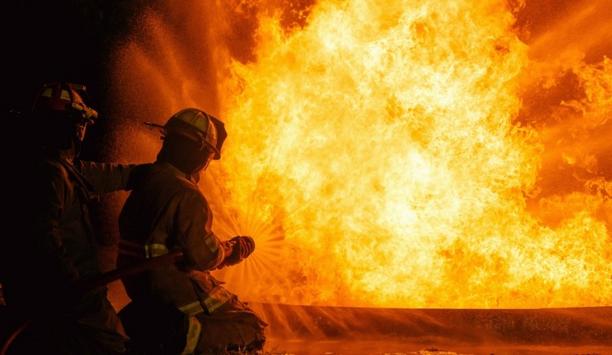
The New Future For Fire Agencies
Download
The Eight Key Trends in Fire Detection in 2023
Download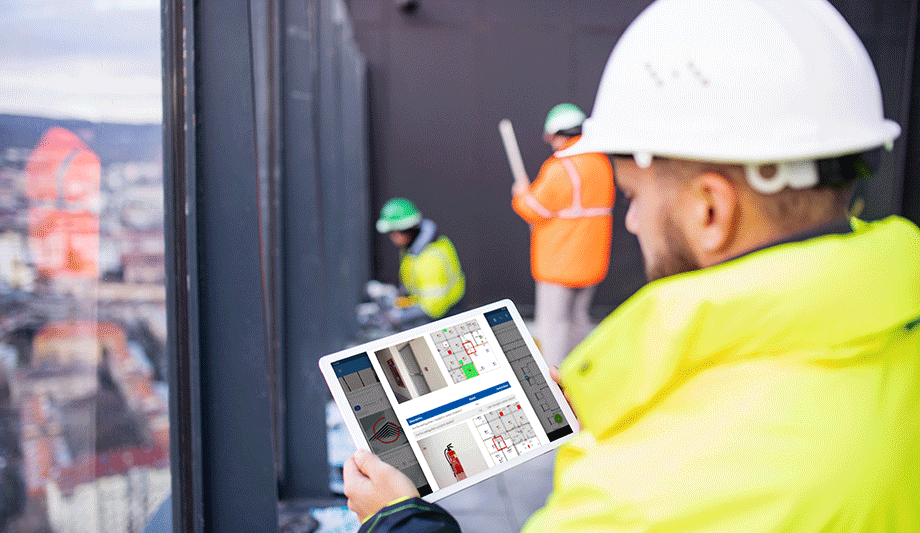
A Digital Platform to Improve Fire Safety Compliance and Inspections
Download
Overcoming the Challenges of Fire Safety in the Paper Industry
Download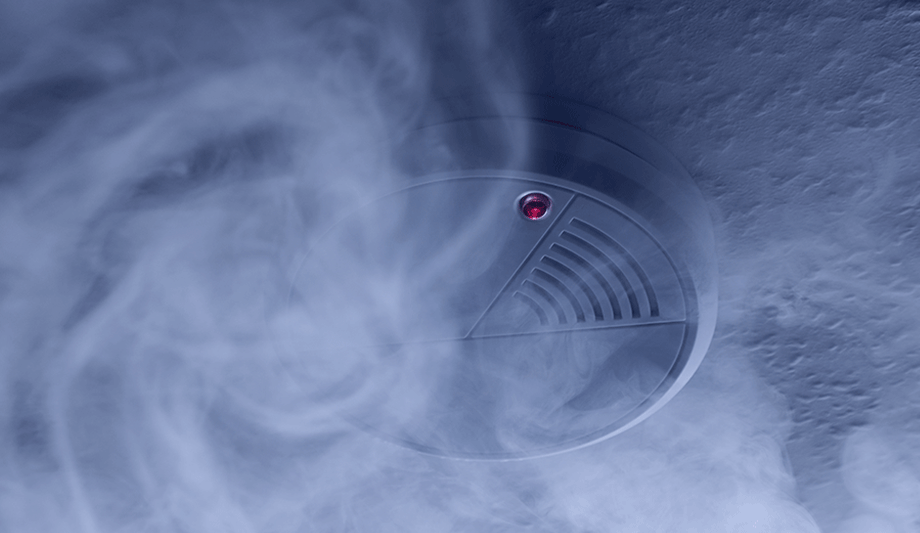
Carbon Monoxide: Creeping Killer Caught In The Act
Download
